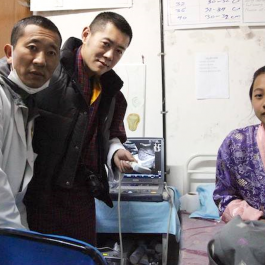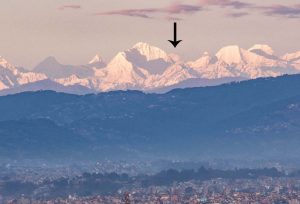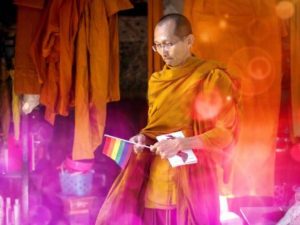After I became a nun in Korea in 1975, I visited a number of Taiwanese Buddhist temples and Japanese Zen temples. This made me realize what a great piece of luck it was that I had become a Seon nun at Songgwangsa, as Korea is the only place where someone like myself could have become a nun and kept my ordination for ten years.
Korean monasteries and nunneries corresponded more to my temperament for three main reasons. Firstly, I feel that Korean people are like the Irish or Italians of the East. They are kind, incredibly hospitable, and somewhat formal—though not too much so, otherwise it would have been too much for a young French girl like me. Secondly, the amount of Seon practice one can do each year as a nun is remarkable—six months of the year and more if one wants to—in ideal conditions, with supportive Dharma friends, beautiful mountains, and great teachers. Thirdly, Korea is the most egalitarian place for Buddhist nuns. The nuns are equal to the monks in terms of practice, training, and the respect and support that they receive from laypeople.
Moreover, Korean Seon has its own flavor. I value having had the opportunity to study it in depth. At the beginning, I was given the hwadu “What is this?” to investigate in meditation. “What is this?” comes from an encounter between the Sixth Patriarch, Huineng, and a young monk who became one of his foremost disciples, Huaijang:
Huaijang entered the room and bowed to Huineng. Huineng asked: “Where have you come from?” “I have come from Mount Song,” replied Huaijang. “What is this and how did it get here?” demanded Huineng. Huaijang could not answer, and remained speechless. He practiced for many years until he understood, and then went to see Huineng to tell him about his breakthrough. Huineng asked: “What is this?” Huaijang replied: “To say it is like something is not the point. But still it can be cultivated.”
I used to sit in meditation and still do, asking again and again “What is this? What is this?” What is it that moves, thinks, speaks? And also before we think, move, speak, “What is this?” I am not asking about an external object: “What is the carpet, the cup of tea, the sound of the bird?” I turn the light back onto my experience, asking “What is this in this moment?” I have to be very careful that it does not become an intellectual enquiry. I am not speculating with my mind, I am trying to become one with the question. The most important part of the question is not the meaning of the words themselves, but the question mark—“?”. I am asking unconditionally “What is this?” without looking for an answer, without expecting an answer—I am trying to develop a feeling of openness, of wonderment. As I throw out the question “What is this?” I am opening to the whole moment. I am letting go of any need for knowledge and security. There is no place to rest. The body and mind become a question.
In terms of concentration, I try to return to the question again and again. The question anchors me and brings me back to this moment. But I am not repeating the question like a mantra. These are not sacred words, and it does not matter how many times they are repeated. What is important is that the questioning is alive, that the question is fresh each time I ask “What is this?” I am asking because I do not know. It is similar to when I lose some keys. I look and look and look and I have no idea where they might be. I think “keys,” but I don’t know, and there is only a sensation of questioning.
There are several ways to ask the question. At the beginning especially, it is possible to connect the question with the breath. Master Songdam Sunim recommended this method to me once. One breathes in, and as one breathes out one asks “What is this?” Otherwise one can try to make the questioning cyclical, asking gently but steadily; thus as soon as one “What is this?” stops, another “What is this?” starts. Once one’s concentration is better, one can just ask the question from time to time and stay with the sense of questioning it evokes. As soon as the sensation of questioning dissipates, one can ask the question again.
In Seon Buddhism it is said: “Great questioning, great awakening; small questioning, small awakening; no questioning, no awakening.” Over time, the questioning meditation helps one to develop quietness and clarity together, but also to become more aware of impermanence and conditionality, and thus to cultivate and manifest a wise and compassionate attitude and actions.
This article is the third in a three-part series on the author’s life as a nun in Korea. Read her earlier articles “Learning from Venerable (Pangjang) Kusan Sunim” and “Beopjeong Sunim’s Korean Way of Tea.”









